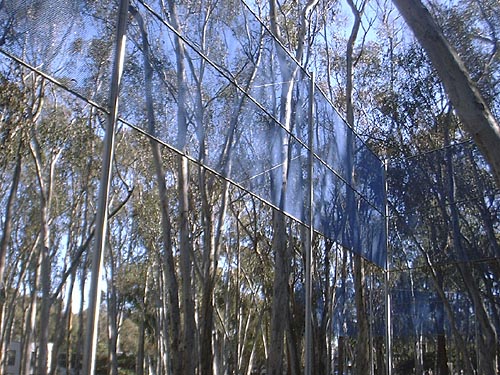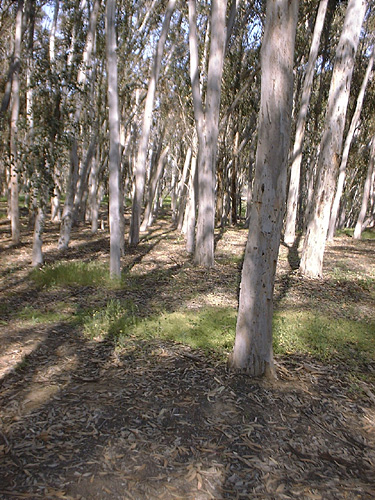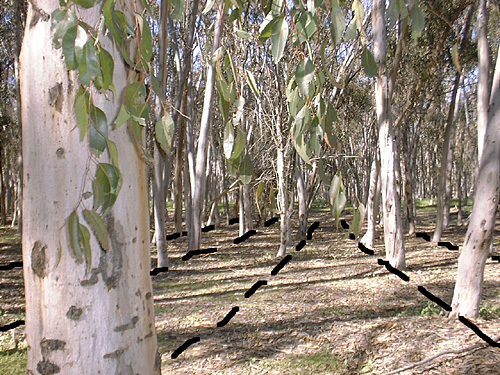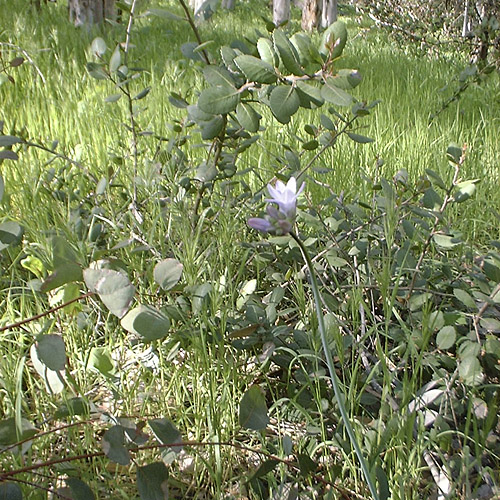Set in the fake forest of UCSD’s eucalyptus groves is one my favorite artworks. Robert Irwin’s Two Running Violet V Forms was installed in 1983 as part of the campus’ Stuart Collection of site-specific outdoor art. The piece, like much of the artist’s output, is a subtle presence that takes a while to absorb.
Here’s how you might encounter it, approaching on a path through the trees: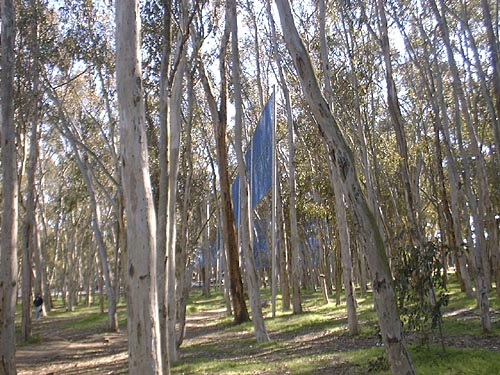
The piece is pretty unassuming and is almost not there. Stainless steel posts raise two V-shaped runs of a tight blue-violet colored chain-link mesh up into the tree canopy. That’s basically all there is to it, materially at least, which of course would be basically saying the same thing as a Mark Rothko painting is a piece of stretched cloth with some paint applied to it.
Once you add some light, the magic happens. Depending on where you stand and depending on how the light hits it, the piece’s panels are either almost transparent or absolutely opaque. What looks transparent subtly darkens and colors what you view through it. The panels that appear opaque accept shadows of the surrounding branches gracefully.
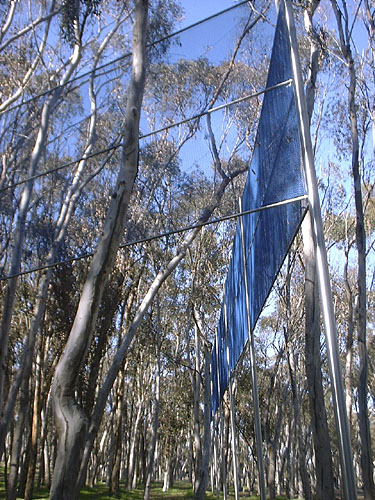
Move around the work and things change. What starts out transparent turns opaque; what begins as opaque dissolves into a blue-violet vapor. Visits during sunny weather end up being subtly different from those on overcast days. Like the living trees around it, the piece responds to the weather and its surroundings.
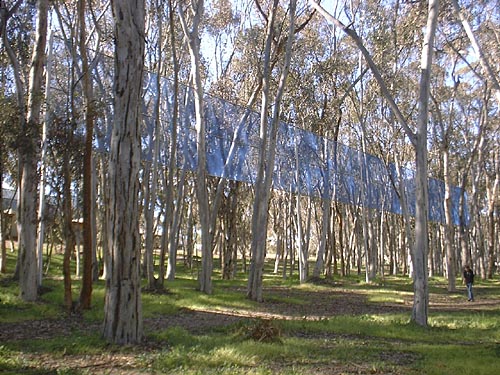
To the general public Robert Irwin is now probably most famous–to me unfortunately so–for designing the Central Garden at the J. Paul Getty Museum in LA. It’s a beautiful and interesting garden, but not one that shows off what he does best. The Getty website talks about the garden as “always changing, never twice the same,” which any gardener would say about their own garden. But it also is a description I’d apply to the piece at UCSD.
It’s interesting that the Running Violet V Forms, from 20 years earlier than the Getty garden, also has a botanical element. The Stuart Collection description mentions that “[p]urple flowering iceplant, echoing but not matching the color of the chain link, is planted under the fence.” When he was working on the Getty garden, Irwin was quoted declaring himself not to be a gardener, and of his working with plant consultants to complete the design. This is where bringing in a plant consultant at UCSD might have resulted in a different artwork. Today, the iceplants live on only as one or two little mounds that almost never bloom. You wouldn’t take them to be intentional parts of the artwork. Planted in the fairly deep shade of the understory, these sun-loving succulents live out a meager existence, deprived of the very light that gives life to the artwork high overhead.

